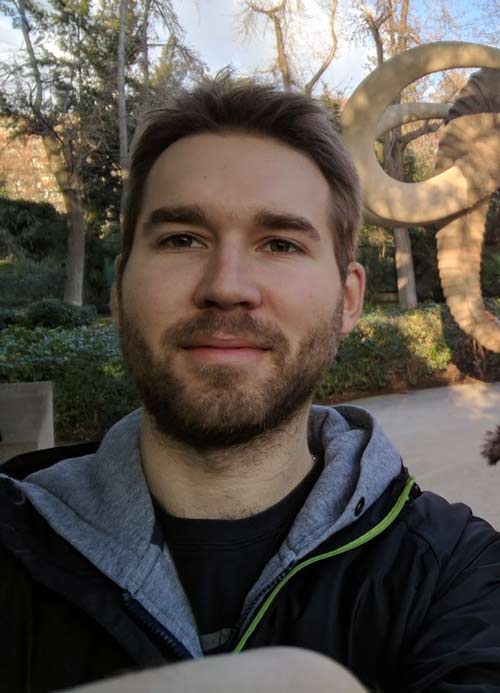Research contribution
One of the main challenges in the field of real-time simulation is the resolution of soft body deformations
. This is particularly true in augmented reality applications such as computer-assisted surgery. The process
must mimic the behavior of a deformable organ, usually reconstructed from 3D medical images, in real time.
It involves the resolution of a complex system of partial differential equations for which the finite
element method is generally favored. However, the latter method requires a discretization of the simulated
model into a sequence of well- formed geometric elements connected to each other, a tedious process. Indeed,
the biomechanical model must often be reconstructed from complex and non-concave surfaces, sometimes even
with holes or generated from incomplete or erroneous data.
Several research initiatives have been put in place to identify new methods for solving deformable dynamics
that are not only accurate and fast, but also robust enough to manage unpredictable and often non-physical
inputs. The first part of my thesis focused on the so-called meshless or element-free methods. With this
approach, an approximation of the displacement field inside a volume and the estimation of the elastic
forces are done using a simple point cloud based discretization. These points, frequently called particles,
are forming the set of degrees of freedom to be solved. Thus, where traditional finite element methods
require complex discretization, meshless methods merely require the simulated object’s volume to be filled
with points.
The second part of the thesis was dedicated to the traditional methods of discretization with isoparametric
elements. However, unlike traditional finite element methods, the concept of fictitious domains was
investigated. In this case, the simulated object is immersed in a grid of regular elements. This grid is
then used to solve the initial boundary problem. The difficulty of meshing a complex surface using the
finite element method is therefore transposed to the handling of grid elements cut by the boundary surface
of the simulated object.
Publications
Exploring new numerical methods for the simulation of soft tissue deformations in surgery assistance
Jean-Nicolas Brunet
Thesis, Université de Strasbourg, 2020.
https://hal.inria.fr/tel-03130643
Use of stereo-laparoscopic liver surface reconstruction to compensate for
pneumoperitoneum deformation through biomechanical modeling.
Andrea Teatini, Jean-Nicolas Brunet, Sergei Nikolaev, Bjørn Edwin, Stéphane Cotin, Ole Jakob Elle
VPH2020, Virtual Physiological Human, Paris, 2020.
https://hal.inria.fr/hal-03130613
Data-driven simulation for augmented surgery.
Andrea Mendizabal, Eleonora Tagliabue, Tristan Hoellinger, Jean-Nicolas Brunet, Sergei Nikolaev, Stéphane Cotin
Developments and Novel Approaches in Biomechanics and Metamaterials. Springer, Cham, 2020. 71-96.
https://doi.org/10.1007/978-3-030-50464-9_5
Physics-based deep neural network for real-time lesion tracking in ultrasound-guided breast biopsy.
Andrea Mendizabal, Eleonora Tagliabue, Jean-Nicolas Brunet, Diego Dall’Alba, Paolo Fiorini, Stéphane Cotin
Computational Biomechanics for Medicine. Springer, Cham, 2019.
https://doi.org/10.1007/978-3-030-42428-2_4
Physics-based deep neural network for augmented reality during liver surgery.
Jean-Nicolas Brunet, Andrea Mendizabal, Antoine Petit, Nicolas Golse, Eric Vibert, Stéphane Cotin
International Conference on Medical image computing and computer-assisted intervention. Springer, Cham, 2019.
https://doi.org/10.1007/978-3-030-32254-0_16
Corotated meshless implicit dynamics for deformable bodies.
Jean-Nicolas Brunet, Vincent Magnoux, Benoît Ozell, Stéphane Cotin
WSCG 2019-27th International Conference on Computer Graphics, Visualization and Computer Vision. Západočeská univerzita, 2019.
https://doi.org/10.24132/CSRN.2019.2901.1.11
Analyse des méthodes par éléments finis et méthodes sans
maillage pour la déformation de corps mous en simulation chirurgicale.
Jean-Nicolas Brunet
Dissertation, École Polytechnique de Montréal, 2017.
https://publications.polymtl.ca/2529
